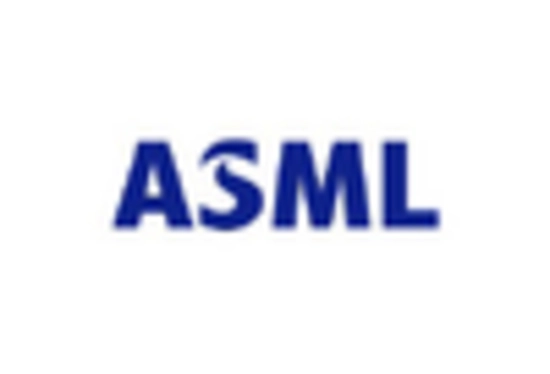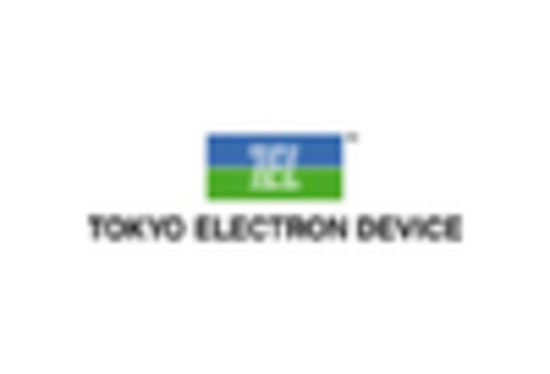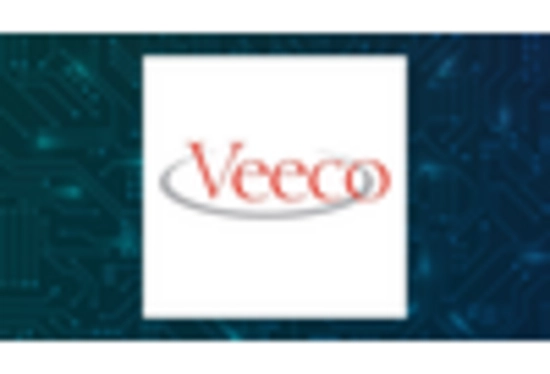Emergence of 5G Technology
The rollout of 5G technology is poised to be a transformative force for the Thin Film Semiconductor Deposition Market. With its promise of faster data speeds and enhanced connectivity, 5G is driving the need for advanced semiconductor materials that can support the infrastructure required for this technology. The telecommunications sector is investing heavily in 5G networks, with projections indicating a market growth rate of around 15% annually. This investment necessitates the development of high-performance thin film semiconductors that can operate efficiently at higher frequencies. Consequently, the Thin Film Semiconductor Deposition Market stands to benefit from the increasing demand for innovative deposition techniques that cater to the requirements of 5G technology.
Growth in Automotive Electronics
The automotive sector is undergoing a transformation, with electronics playing a pivotal role in modern vehicles. This trend is driving the Thin Film Semiconductor Deposition Market, as vehicles increasingly incorporate advanced electronic systems for safety, navigation, and entertainment. The automotive electronics market is projected to grow at a compound annual growth rate of approximately 10% in the coming years. This growth is largely attributed to the rising demand for electric vehicles and autonomous driving technologies, which rely heavily on thin film semiconductors for their functionality. As a result, the Thin Film Semiconductor Deposition Market is likely to see increased demand for innovative deposition techniques that can meet the stringent requirements of automotive applications.
Rising Demand for Consumer Electronics
The increasing demand for consumer electronics is a pivotal driver for the Thin Film Semiconductor Deposition Market. As technology advances, the need for smaller, more efficient devices has surged. This trend is particularly evident in smartphones, tablets, and wearables, where thin film semiconductors play a crucial role in enhancing performance and reducing size. According to recent data, the consumer electronics sector is projected to grow at a compound annual growth rate of approximately 5% over the next few years. This growth directly correlates with the rising demand for thin film deposition technologies, as manufacturers seek to optimize their products. Consequently, the Thin Film Semiconductor Deposition Market is likely to experience substantial growth, driven by the relentless pursuit of innovation in consumer electronics.
Integration of IoT and Smart Technologies
The integration of Internet of Things (IoT) and smart technologies is emerging as a significant driver for the Thin Film Semiconductor Deposition Market. As industries increasingly adopt IoT solutions, the demand for advanced semiconductor materials that enable connectivity and functionality in smart devices is on the rise. Thin film semiconductors are essential for the miniaturization and efficiency of sensors and communication devices. Market data suggests that the IoT market is expected to grow at a staggering rate of over 25% annually, creating a substantial demand for thin film deposition technologies. This growth indicates a robust opportunity for the Thin Film Semiconductor Deposition Market, as manufacturers strive to meet the evolving needs of smart technology applications.
Advancements in Renewable Energy Technologies
The shift towards renewable energy sources is significantly influencing the Thin Film Semiconductor Deposition Market. Technologies such as solar panels and energy-efficient lighting systems increasingly rely on thin film semiconductors for improved efficiency and performance. The global push for sustainable energy solutions has led to a marked increase in investments in solar energy technologies, with projections indicating a growth rate of around 20% in the solar market over the next five years. This trend necessitates the development of advanced thin film deposition techniques to enhance the efficiency of photovoltaic cells. As a result, the Thin Film Semiconductor Deposition Market is poised to benefit from the growing demand for renewable energy solutions, which require innovative semiconductor technologies.















Leave a Comment